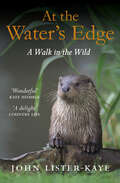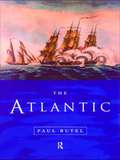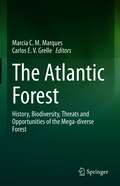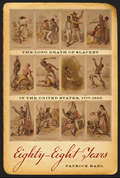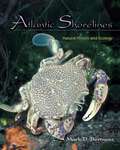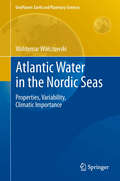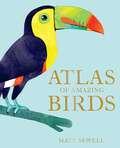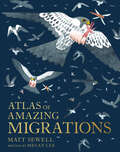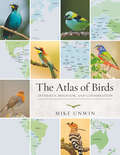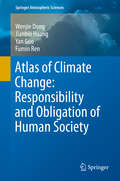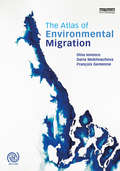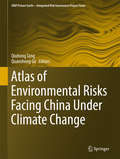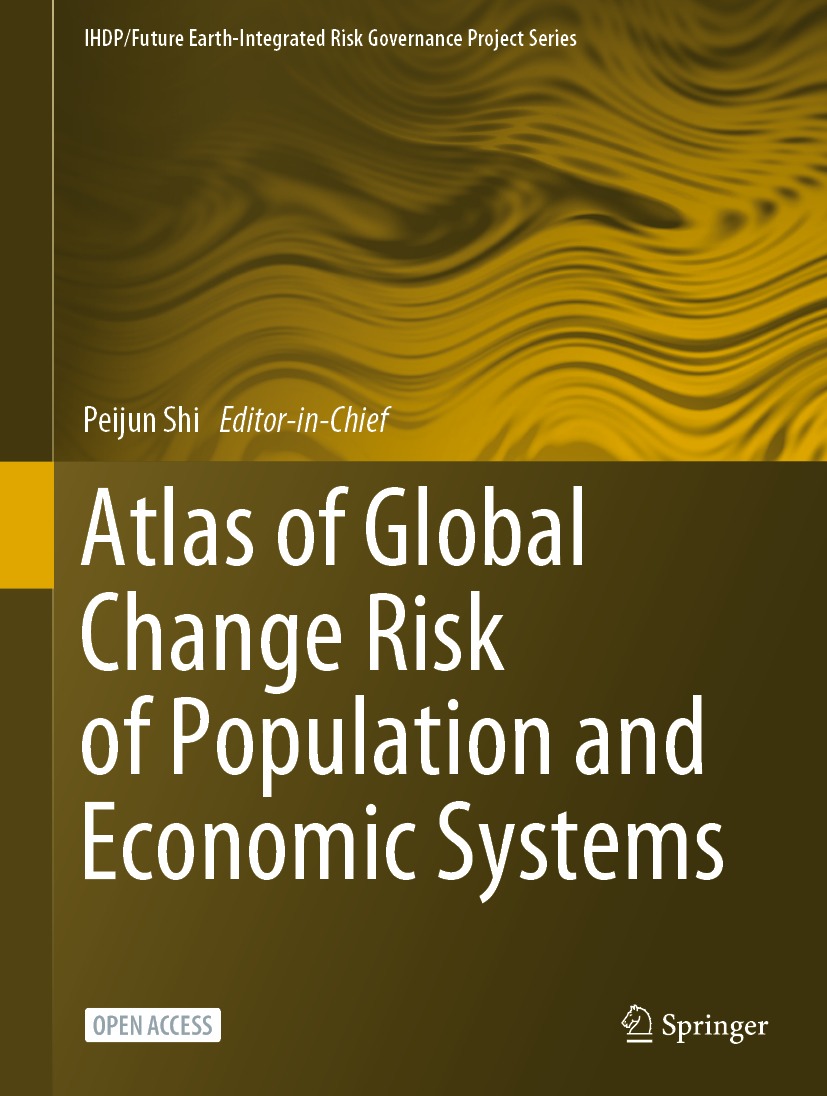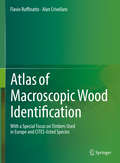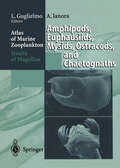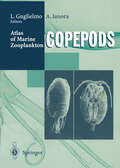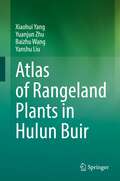- Table View
- List View
At the Water's Edge: A Walk in the Wild
by John Lister-KayeFor the last thirty years John Lister-Kaye, one of Britain's best-known nature writers, has taken the same circular walk from his home deep in a Scottish glen up to a small hill loch. Each day brings a new observation or an unexpected encounter - a fragile spider's web, an osprey struggling to lift a trout from the water or a woodcock exquisitely camouflaged on her nest - and every day, on his return home, he records his thoughts in a journal. Drawing on this lifetime of close observation, John Lister-Kaye's new book encourages us to look again at the nature around us and to discover its wildness for ourselves. It also forges wonderful connections between the most unlikely subjects, from photosynthesis and the energy cycle to Norse mythology, to weasels and perfume and to the over-population of our planet. At the Water's Edge is a lyrical hymn to the wildlife of Britain, and a powerful warning to respect and protect it.
The Atlantic
by Paul ButelFrom Antiquity to modern times, the Atlantic has been the subject of myths and legends. The Atlantic by Paul Butel offers a global history of the ocean encompassing the exploits of adventurers, Vikings, explorers such as Christopher Columbus, emigrants, fishermen, and modern traders. The book also highlights the importance of the growth of ports such as New York and Liverpool and the battles of the Atlantic in the world wars of the twentieth century. The author offers an examination of the legends of the ocean, beginning with the Phoenicians and Carthaginians navigating beyong the Pillars of Hercules, and details the exploitation and power struggles of the Atlantic through the centuries. The book surveys the important events in the Atlantic's rich history and comprehensively analyses the changing fortunes of sea-going nations, including Britain, the United States and Germany.
The Atlantic Forest: History, Biodiversity, Threats and Opportunities of the Mega-diverse Forest
by Marcia C. M. Marques Carlos E. V. GrelleThe Atlantic Forest is one of the 36 hotspots for biodiversity conservation worldwide. It is a unique, large biome (more than 3000 km in latitude; 2500 in longitude), marked by high biodiversity, high degree of endemic species and, at the same time, extremely threatened. Approximately 70% of the Brazilian population lives in the area of this biome, which makes the conflict between biodiversity conservation and the sustainability of the human population a relevant issue. This book aims to cover: 1) the historical characterization and geographic variation of the biome; 2) the distribution of the diversity of some relevant taxa; 3) the main threats to biodiversity, and 4) possible opportunities to ensure the biodiversity conservation, and the economic and social sustainability. Also, it is hoped that this book can be useful for those involved in the development of public policies aimed at the conservation of this important global biome.
The Atlantic (PDF)
by Paul ButelFrom Antiquity to modern times, the Atlantic has been the subject of myths and legends. The Atlantic by Paul Butel offers a global history of the ocean encompassing the exploits of adventurers, Vikings, explorers such as Christopher Columbus, emigrants, fishermen, and modern traders. The book also highlights the importance of the growth of ports such as New York and Liverpool and the battles of the Atlantic in the world wars of the twentieth century. The author offers an examination of the legends of the ocean, beginning with the Phoenicians and Carthaginians navigating beyong the Pillars of Hercules, and details the exploitation and power struggles of the Atlantic through the centuries. The book surveys the important events in the Atlantic's rich history and comprehensively analyses the changing fortunes of sea-going nations, including Britain, the United States and Germany.
The Atlantic Sailor's Handbook: Improvisation And The Theatre (Bloomsbury Revelations Ser.)
by Alastair BuchanBased on the author's Sailing an Atlantic Circuit, this practical, how-to guide to the planning, preparation and execution of a passage is both a helpful and an inspirational book for all sailors considering an offshore or ocean passage. A vastly experienced Atlantic ocean sailor, Alastair Buchan looks in detail at three specific passages (a crossing of the Atlantic Ocean, a passage from the Eastern Seaboard of the USA to the Caribbean, and cruising around the Caribbean itself). The advice, ranging from choosing/refitting a boat, insurance, safety, training crew and route planning to watch keeping, weather routeing, heavy weather strategies and disaster management, is applicable to any other open sea passage and will be invaluable to any would-be long distance sailors.Illustrated throughout with helpful diagrams, maps, and inspirational photography, this is an essential handbook for all sailors aspiring to make an offshore or ocean passage.'An informative common sense approach...from decades of personal experience' Dorset Echo 'A comprehensive user-friendly guide that will inspire any armchair dreamer...thoroughly informative and entertainingly written' Yachting Monthly
Atlantic Shorelines: Natural History and Ecology
by Mark D. BertnessA comprehensive introduction to the natural history and intertidal ecology of East Coast shorelinesAtlantic Shorelines is an introduction to the natural history and ecology of shoreline communities on the East Coast of North America. Writing for a broad audience, Mark Bertness examines how distinctive communities of plants and animals are generated on rocky shores and in salt marshes, mangroves, and soft sediment beaches on Atlantic shorelines.The book provides a comprehensive background for understanding the basic principles of intertidal ecology and the unique conditions faced by intertidal organisms. It describes the history of the Atlantic Coast, tides, and near-shore oceanographic processes that influence shoreline organisms; explains primary production in shoreline systems, intertidal food webs, and the way intertidal organisms survive; sets out the unusual reproductive challenges of living in an intertidal habitat, and the role of recruitment in shaping intertidal communities; and outlines how biological processes like competition, predation, facilitation, and ecosystem engineering generate the spatial structure of intertidal communities.The last part of the book focuses on the ecology of the three main shoreline habitats—rocky shores, soft sediment beaches, and shorelines vegetated with salt marsh plants and mangroves—and discusses in detail conservation issues associated with each of them.
Atlantic Shorelines: Natural History and Ecology
by Mark D. BertnessA comprehensive introduction to the natural history and intertidal ecology of East Coast shorelinesAtlantic Shorelines is an introduction to the natural history and ecology of shoreline communities on the East Coast of North America. Writing for a broad audience, Mark Bertness examines how distinctive communities of plants and animals are generated on rocky shores and in salt marshes, mangroves, and soft sediment beaches on Atlantic shorelines.The book provides a comprehensive background for understanding the basic principles of intertidal ecology and the unique conditions faced by intertidal organisms. It describes the history of the Atlantic Coast, tides, and near-shore oceanographic processes that influence shoreline organisms; explains primary production in shoreline systems, intertidal food webs, and the way intertidal organisms survive; sets out the unusual reproductive challenges of living in an intertidal habitat, and the role of recruitment in shaping intertidal communities; and outlines how biological processes like competition, predation, facilitation, and ecosystem engineering generate the spatial structure of intertidal communities.The last part of the book focuses on the ecology of the three main shoreline habitats—rocky shores, soft sediment beaches, and shorelines vegetated with salt marsh plants and mangroves—and discusses in detail conservation issues associated with each of them.
Atlantic Water in the Nordic Seas: Properties, Variability, Climatic Importance (GeoPlanet: Earth and Planetary Sciences)
by Waldemar WalczowskiThe book presents a wide description of hydrographic conditions in the studied area of the Norwegian and Greenland Seas. Variability of the Atlantic Water properties have been presented on the basis of time series obtained from oceanographic measurements performed each summer from 2000 to 2007 by the Institute of Oceanology Polish Academy of Sciences. The warming observed in that period has been described in detail as well as cooling of the Atlantic Water flowing towards the Fram Strait in 2007. Furthermore, concepts regarding multi-branch structure of the West Spitsbergen Current have been presented, types of flows in individual branches as well as variability of the flows. Description of the structure, transports and variability of the sea currents is based mostly on hydrographic measurements and baroclinic calculations. The results confirm a leading role of the ocean in climate shaping and acknowledges the importance of the Thermohaline Circulation for the climate.
Atlas of Amazing Birds
by Matt SewellMatt Sewell takes you on a world tour, exploring the most amazing birds on every continent
Atlas of Amazing Migrations
by Megan LeeMatt Sewell returns with a sumptuous celebration of the most amazing migrating mammals, birds, reptiles, fish, insects and even plants who battle through Earth's toughest conditions to make extreme journeys. Gorgeously illustrated in Matt's signature watercolours and described with wit and charm, animal lovers will treasure this amazing atlas.
The Atlas of Birds: Diversity, Behavior, and Conservation
by Mike UnwinThe Atlas of Birds captures the breathtaking diversity of birds, and illuminates their conservation status around the world. Full-color maps show where birds are found, both by country and terrain, and reveal how an astounding variety of behavioral adaptations--from flight and feeding to nest building and song--have enabled them to thrive in virtually every habitat on Earth. Maps of individual journeys and global flyways chart the amazing phenomenon of bird migration, while bird classification is explained using maps for each order and many key families. Conservation provides a strong focus throughout, with maps illustrating where and why birds are most under threat, and what is being done to protect them. Separate sections examine key factors influencing their distribution and endangering their survival, from deforestation and climate change to invasive species and the cage-bird trade. Bird groups most affected, such as island endemics, are highlighted, while a fascinating chapter explores the complex historical relationship between birds and humans, with maps and data for everything from poultry farming to birdwatching. The maps are supported by an authoritative text that uses the very latest data and case studies from BirdLife International. Packed with sumptuous photos, original diagrams, and imaginative graphics that bring the numbers to life, this book is a stunning and timely insight into perhaps the most colorful and intriguing group of organisms on our planet. The premier illustrated atlas of bird diversity, behavior, and conservation Features full-color maps, photos, and diagrams Covers bird evolution, classification, and behavior Describes the complex relationship between birds and their habitats Explores the impact of human activities on species survival Illustrates where and why birds are most under threat--and how to protect them
An Atlas of Cat Anatomy
by Hazel E. Field Mary E. TaylorAn Atlas of Cat Anatomy can help a student learn twice as much as he could in the same amount of time using only a written description. The book is spiral bound and stands like an easel, taking a minimum amount of space in the work area. Altogether there are fifty-seven plates featuring the various parts and organ systems in their actual size, making identification remarkably easy. A brief verbal description accompanies each plate. In addition, the extensive glossary includes synonymous terms, derivations, definitions, and keys to pronunciation.
An Atlas of Cat Anatomy
by Hazel E. Field Mary E. TaylorAn Atlas of Cat Anatomy can help a student learn twice as much as he could in the same amount of time using only a written description. The book is spiral bound and stands like an easel, taking a minimum amount of space in the work area. Altogether there are fifty-seven plates featuring the various parts and organ systems in their actual size, making identification remarkably easy. A brief verbal description accompanies each plate. In addition, the extensive glossary includes synonymous terms, derivations, definitions, and keys to pronunciation.
An Atlas of Cat Anatomy
by Hazel E. Field Mary E. TaylorAn Atlas of Cat Anatomy can help a student learn twice as much as he could in the same amount of time using only a written description. The book is spiral bound and stands like an easel, taking a minimum amount of space in the work area. Altogether there are fifty-seven plates featuring the various parts and organ systems in their actual size, making identification remarkably easy. A brief verbal description accompanies each plate. In addition, the extensive glossary includes synonymous terms, derivations, definitions, and keys to pronunciation.
An Atlas of Cat Anatomy
by Hazel E. Field Mary E. TaylorAn Atlas of Cat Anatomy can help a student learn twice as much as he could in the same amount of time using only a written description. The book is spiral bound and stands like an easel, taking a minimum amount of space in the work area. Altogether there are fifty-seven plates featuring the various parts and organ systems in their actual size, making identification remarkably easy. A brief verbal description accompanies each plate. In addition, the extensive glossary includes synonymous terms, derivations, definitions, and keys to pronunciation.
Atlas of Climate Change: Responsibility and Obligation of Human Society (Springer Atmospheric Sciences)
by Wenjie Dong Jianbin Huang Yan Guo Fumin RenThis atlas and reference resource assembles the latest research findings on the responsibility and obligation of human society for historical climate change. It clearly and quantitatively estimates to what extent the developed and developing world are responsible for historical climate change with regard to anthropogenic carbon and sulfur emissions as well as global carbon trade, and so provides a potential tool to address the controversial issue of carbon emission reduction in international climate negotiations. Since the quantitative attribution of historical climate change is calculated based on CMIP5 models, the fidelity of these models in representing the observed climate change is also evaluated. In addition to evaluation, future climate change based on CMIP5 models is also shown both on global and regional scales (especially for China and its surrounding areas ) in terms of surface air temperature, precipitation, sea surface temperature, atmospheric circulations and Arctic Sea ice. The atlas also makes various comparisons among different multi-model ensemble methods in order to obtain the most reliable estimation.
An Atlas of Endangered Species
by Megan McCubbin'A call to arms for everyone' Steve BackshallThe diversity of life on earth is astounding, with each species perfectly adapted to its environment. Sharks can navigate the ocean using electromagnetic fields; sloths use algae as camouflage; albatross can fly for hours without beating their wings; and orca pods each have unique cultures and languages. But every hour, three species disappear. Our incredible world is at risk.Megan McCubbin reveals the stories of the scientists, rangers and conservationists who are fighting to save these extraordinary creatures from extinction. An Atlas of Endangered Species shows us that the battle is on for their survival - and we all have a part to play.'Joyful and heartbreaking, an inspiring celebration of some of our planet's most endangered species and those who champion them' - Dave Goulson, author of Silent Earth'A powerful, passionate plea for a wilder future' - Sophie Pavelle, author of Forget Me Not
The Atlas of Environmental Migration
by Dina Ionesco Daria Mokhnacheva François GemenneAs climate change and extreme weather events increasingly threaten traditional landscapes and livelihoods of entire communities the need to study its impact on human migration and population displacement has never been greater. The Atlas of Environmental Migration is the first illustrated publication mapping this complex phenomenon. It clarifies terminology and concepts, draws a typology of migration related to environment and climate change, describes the multiple factors at play, explains the challenges, and highlights the opportunities related to this phenomenon. Through elaborate maps, diagrams, illustrations, case studies from all over the world based on the most updated international research findings, the Atlas guides the reader from the roots of environmental migration through to governance. In addition to the primary audience of students and scholars of environment studies, climate change, geography and migration it will also be of interest to researchers and students in politics, economics and international relations departments.
The Atlas of Environmental Migration
by Dina Ionesco Daria Mokhnacheva François GemenneAs climate change and extreme weather events increasingly threaten traditional landscapes and livelihoods of entire communities the need to study its impact on human migration and population displacement has never been greater. The Atlas of Environmental Migration is the first illustrated publication mapping this complex phenomenon. It clarifies terminology and concepts, draws a typology of migration related to environment and climate change, describes the multiple factors at play, explains the challenges, and highlights the opportunities related to this phenomenon. Through elaborate maps, diagrams, illustrations, case studies from all over the world based on the most updated international research findings, the Atlas guides the reader from the roots of environmental migration through to governance. In addition to the primary audience of students and scholars of environment studies, climate change, geography and migration it will also be of interest to researchers and students in politics, economics and international relations departments.
Atlas of Environmental Risks Facing China Under Climate Change (IHDP/Future Earth-Integrated Risk Governance Project Series)
by Qiuhong Tang Quansheng GeThis atlas provides the most comprehensive and accurate overview of environmental risks relating to climate change vulnerability and adaptation in China. It addresses the agricultural, ecosystem and heat wave health risk posed by climate change and presents the projected environmental risks in the 21st century under climate change and socioeconomic scenarios. The detailed and concise risk assessments are mapped in grid units, allowing easy environmental risk assessment for specific locations. The atlas contributes significantly to the knowledge base for climate change adaptation in China and is a valuable resource for students and professionals in the fields of geographic sciences and climate change.
Atlas of Global Change Risk of Population and Economic Systems (IHDP/Future Earth-Integrated Risk Governance Project Series)
by Peijun ShiThis book is open access and illustrates the spatial distribution of the global change risk of population and economic systems with the maps of environment, global climate change, global population and economic systems, and global change risk. The risks of global change are mapped at 0.25 degree grid unit. The risk results and their contribution rates of the world at national level are unprecedentedly derived and ranked. The book can be a good reference for researchers and students in the field of global climate change and natural disaster risk management, as well as risk managers and enterpriser to understand the global change risk of population and economic systems.
Atlas of Macroscopic Wood Identification: With a Special Focus on Timbers Used in Europe and CITES-listed Species
by Flavio Ruffinatto Alan CrivellaroThis atlas presents macroscopic descriptions, macro cross section pictures, general characteristics and identification keys of 335 wood species currently introduced in the European timber market from all over the world. Overall 292 different genera are represented and CITES-listed timbers are also included. Macroscopic descriptions are based on a recently proposed list of macroscopic features for wood identification. Macroscopic features and their codes are defined and illustrated in the atlas. Wood descriptions also include information about natural durability, physical and mechanical properties, end uses, environmental sustainability and possible related misleading commercial names. Furthermore, each genus is described in terms of number of species, geographical distribution and main commercial timbers, and details are given about to what extent timbers within the genus can be typically identified through macroscopic and microscopic analysis, if any.The atlas will be a valuable guide for all agents in charge for timber verification, those involved in the European Timber Regulation enforcement and CITES inspections, as well as wood scientists, foresters, wood sellers, wood restorers, and any wood worker and wood passionate interested in a fast and reliable tool for wood identification.
Atlas of Marine Zooplankton Straits of Magellan: Amphipods, Euphausiids, Mysids, Ostracods, and Chaetognaths
by T. Antezana G. Benassi G. Costanzo N. Crescenti I. Ferrari E. Ghirardelli A. Granata L. Guglielmo K. G. McKenzieAtlas of Marine Zooplankton Straits of Magellan: Copepods
by M. G. Mazzocchi G. Zagami Adrianna Ianora L. Guglielmo N. Crescenti J. HureThe Antarctic represents the last of the world's still unexplored continents. Since 1985, Italy has sent nine expeditions to this region, making it one of the most scientifically active nations in the Antarctic. Italy has built a permanent base there and has begun a systematic collection of data and samples which will contribute to our understanding of this peculiar and extremely fascinating continent. Within this framework, Italy has also conducted research in a sub-Antarctic region of great scientific interest, the Straits of Magellan. This region, with its characteristic oceanography and biota, represents a transition point between the faunal assemblages of temperate and antarctic seas. This atlas on the zooplankton is an important contribution to the study of the faunal assemblages of the region of the Straits and will hopefully be followed by others. The initiative is part of a vast program launched by the Italian Ministry of Universities and Scientific and Technological Research to promote the exploration of Antarctic and sub-Antarctic seas, the aim of which is to preserve one of the Earth's largest and most undisturbed natural laboratories.
Atlas of Rangeland Plants in Hulun Buir
by Xiaohui Yang Yuanjun Zhu Baizhu Wang Yanshu LiuThis book includes description of main morphological characteristics of 435 species (including varieties and subspecies) belonging to 57 families and 233 genera of endemic and endangered plants of Hulun Buir Rangeland in China. A brief description of the morphological characteristics of each plant, flowering period, zoning, habitat, and the usage habits of most plants, together with 1 to 4 photographs taken in the field are provided. This work is designed not only for researchers working in rangeland science, ecological restoration and protection but also for professionals working in rangeland and related fields. The work is a result of many years of rangeland plant collection and specimens identification.
